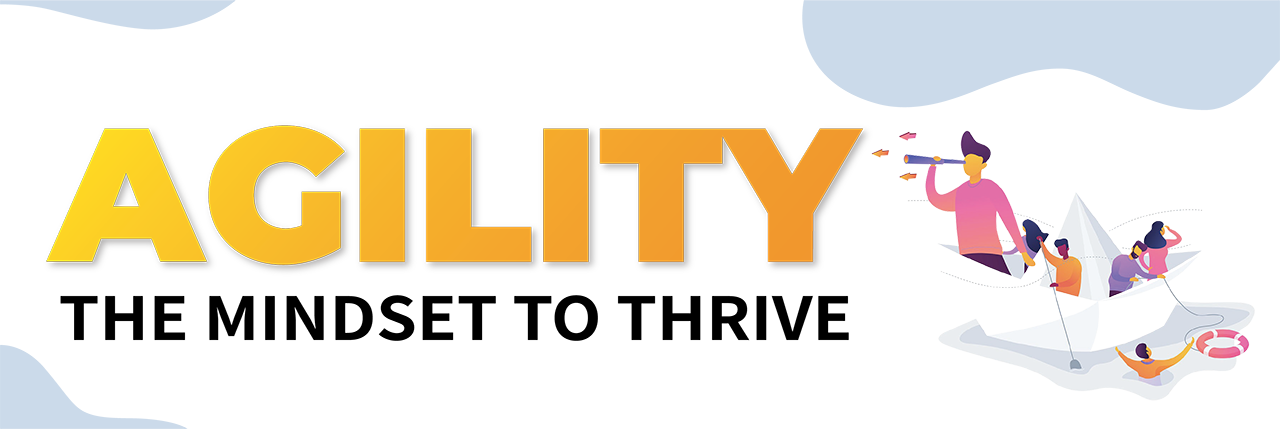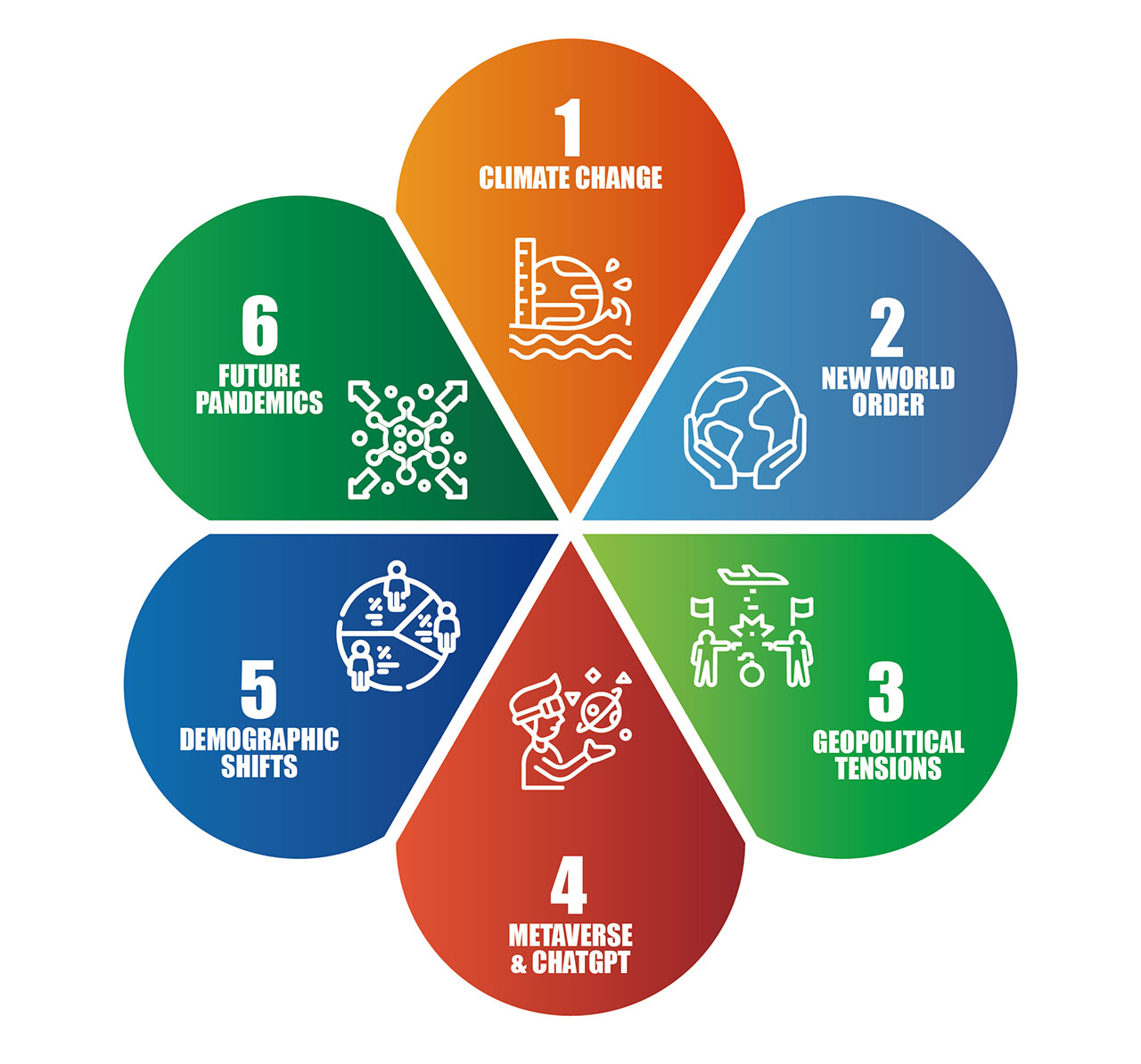Introduction
The world is facing significant disruption and increasingly urgent global challenges affecting individuals, families, organizations, governments, and society. This volatility, uncertainty, complexity, and ambiguity (VUCA)-driven age of disruption brings new complexities, opportunities, as well as risks for businesses (Bawany 2020). The potential for crises has intensified, driven by rapid technological change, and amplified by societal expectations linked to environmental, social, and governance (ESG) phenomena (Bawany 2023).
To achieve organizational high performance in an era of constant disruption and crisis, both agility and resilience are important (see Figure 1).

Figure 1: Importance of Agility and Resilience in Disruptive Environment
Agility refers to the ability to make a rapid change and achieve flexibility in various aspects of the operations, in response to changes or disruptive events in the external environment. It can also be viewed as the capacity for responding with speed and flexibly and decisively toward anticipating, initiating, and taking advantage of opportunities and avoiding any negative consequences of change.
Resilience refers to the ability to anticipate, prepare for, and recover from disasters, emergencies, and other disruptions, and protect and enhance workforce and customer engagement, supply network and financial performance, organizational productivity, and community well-being when disruption occurs.
It can also be viewed as the capacity for resisting, absorbing, and responding, even reinventing, if necessary, in response to fast and/or disruptive change that cannot be avoided such as “black swan” events (Taleb 2007).
The war in Ukraine marks a devastating shift across the worlds of society, geopolitics, and business—they will not be the same for a long time. Yet, the war is only the latest in an increasing number of unexpected disruptions impacting the global economy, and it won’t be the last.
Over the past 20 years, successive economic and geopolitical crises have quickly sent shockwaves throughout the world, affecting every country, economy, trading relationship, and business operation. Amid continuing uncertainty around how the war in Ukraine may end or escalate, business leaders are faced with the challenges of navigating in the dark, accelerating already urgent transformation plans, and building organizational resilience for impacts that may yet strike.
The disruptive events of the past often have had short-term business impacts as leaders seek to return to a state of normalcy. However, we are now in an era of cumulative and extreme disruption that should more sustainably change future decision-making. For example, some immediate consequences of the war in Ukraine could be medium- to long-term sanctions and countersanctions, commodity shortages, and supply chain disruption—so companies need to factor them in as part of their agenda.
Long-term trends already in play before both crises (the COVID-19 pandemic and the war in Ukraine) are accelerating digitalization, changing consumer and employee expectations, and causing a pendulum swing-back toward regionalization from globalization as we’ve known it. Leaders need to plan accordingly without getting stuck in the minutiae of the current moment.
The likely general redesign of business priorities from extreme efficiency and short-term profit to sustainable performance, resilience, and values affects strategic priorities. It may become more important to build a sustainable, flexible but strong business model that is fit to contribute to the solution of big societal and environmental challenges as well as to sustain shocks and disruptions than to maximize short-term gains. Business leaders should focus on strengthening organizational resilience addressing operational concerns such as supply chain bottlenecks and enhancing leadership readiness to navigate these challenges effectively to ensure sustainable business continuity.
Many of the challenges businesses are facing now echo what has transpired throughout the COVID-19 pandemic, from the initial uncertainty and initiatives to keep employees safe, to new ways of working and navigating broken supply chains.
We live in a constant era of disruption in which powerful global forces are changing how we live and work. The new world order is leading to growing challenges to globalization, geopolitical tensions, the rapid spread of new disruptive innovation, shifts in demographic forces, and the challenge of reaching net-zero greenhouse gas emissions. These trends offer considerable new opportunities to companies, sectors, countries, and individuals that embrace them successfully. They are bringing forth dynamic and innovative new players on the world stage and could give a much-needed boost to productivity and prosperity in many countries.
Leading during the period of the pandemic from 2020 to 2022 has been extraordinary. What we are seeing is surely more than the progression of just another business cycle. The unnerving combination of a global pandemic compounded by energy scarcity, rapid inflation, and geopolitical tensions boiling over has people wondering what certainties are left (Bradley et al. 2022).
The Ukraine conflict has also caused food, fuel, and fertilizer prices to skyrocket. It has further disrupted supply chains and global trade and caused distress in financial markets. By current estimates, the war could cut global economic growth by 0.9 percentage points in 2022, as well as undermine development aid to the world’s poor (United Nations 2022a).
The Six Megatrends of Major Disruptive Forces that would lead to potential crises in the coming decades (see Figure 2).
Figure 2: The Megatrends of Future Disruptions
Taking advantage of the opportunities that these trends offer—and avoiding or taming the challenges—will require big adjustments. we sketch out the impact of these six mega-disruptive forces and what businesses can consider in achieving a balancing act toward how a more sustainable society might look like. These ideas do not amount to a comprehensive action plan and are not meant to be exhaustive.
1. Climate Change
A critical mass of the world’s largest companies and countries have now made net-zero pledges, creating a snowball effect that will encourage others to join. As net-zero rapidly becomes the standard for government and corporate commitments, it’s appropriate to stop and ask: Is net zero a sufficient tool to address climate change? How can businesses leverage net-zero emissions strategy to offer the abatement of climate risk for shareholders without abrupt disruption to near-term returns, and achieve reputational benefits for companies that serve customers or businesses that are climate-conscious? What are the significant limitations to the approach, which, if unaddressed, could easily misrepresent and undermine progress toward the goal of environmental sustainability?
2. The New World Order
3. Geopolitical Tensions
4. Disruptive Innovative Technologies: Metaverse and generative AI - ChatGPT
In early 2023, the other disruptive technology that is taking the world by storm is the rise of generative AI such as ChatGPT, which has the potential to be a major game-changer for businesses. This technology, which allows for the creation of original content by learning from existing data, has the power to revolutionize industries and transform the way companies operate. By enabling the automation of many tasks that were previously done by humans, generative AI has the potential to increase efficiency and productivity, reduce costs, and open new growth opportunities. As such, businesses that can effectively leverage technology are likely to gain a significant competitive advantage.
The big questions remain. What impact will this next wave of disruptive innovation technologies have on businesses, work, and social order? How are organizations ensuring their workforce readiness to leverage these latest technologies?
5. Demographic Shifts
6. Future Pandemics
Conclusion: Is Crisis a Threat or Opportunity?
Each of the megatrends highlighted earlier would be challenging on its own; taken together, they can seem daunting. Yet, the opportunities for the economy, business, and society that these global forces generate are equally compelling and there is indeed new prosperity for those quick to embrace them. We cannot ignore the potential challenges, chief among them the growing social inequalities that could arise as a result. As societies, we will face challenges related to the future of work as well as inclusive growth; the two are closely linked. Embracing the trends while mitigating their negative impact on those who cannot keep up and our environment is the new imperative of our era.
References
- Anaya, P., N. Blyth, R. Hanspal, M. McAdoo, S. Ramachandran, K. Ramadurai, and S. Schram. September 17, 2020. The $10 Trillion Case for Open Trade. Boston Consulting Group.
- Bawany, S. 2023. Leadership in Disruptive Times: Negotiating the New Balance. New York, NY: Business Express Press (BEP) Inc. LLC.
- Bawany, S. 2020. Leadership in Disruptive Times. New York, NY: Business Express Press (BEP) Inc. LLC.
- Bawany, S. 2019. Transforming the Next Generation of Leaders: Developing Future Leaders for a Disruptive, Digital-Driven Era of the Fourth Industrial Revolution (Industry 4.0). New York, NY: Business Express Press (BEP) Inc. LLC.
- Bawany, S. 2018a. “Leading in a Disruptive VUCA World.” Expert Insights Series. New York, NY: Business Express Press (BEP) Inc. LLC.
- Bradley, C., J. Seong, S. Smit, and J. Woetzel. 2022. On the Cusp of a New Era? New York City, NY: McKinsey Global Institute, McKinsey & Company.
- Taleb, N.N. 2007. The Black Swan: the Impact of the Highly Improbable. New York, NY: Random House.
- United Nations. April 1, 2020a. “COVID-19: Disrupting Lives, Economies and Societies.” World Economic Situation and Prospects: April 2020 Briefing, no. 136.
- Wiles, J. October 21, 2022. What Is a Metaverse? And Should You Be Buying In? Gartner Inc. Stamford, CT. www.gartner.com/en/articles/what-is-a-metaverse (accessed on November 2, 2022).


